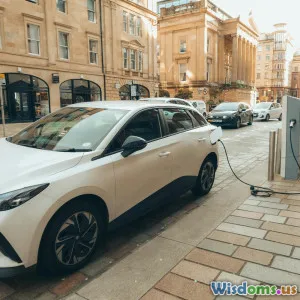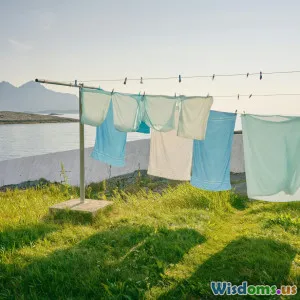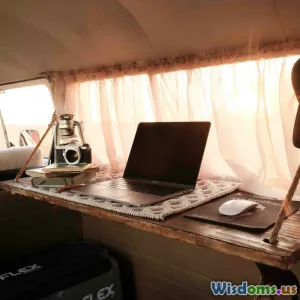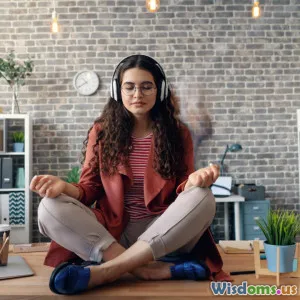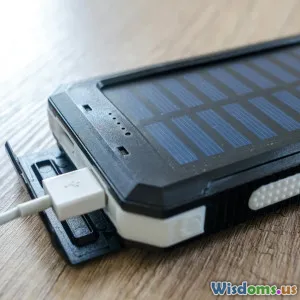
Solar Power for Renters Easy Ways to Go Green Without a Roof Upgrade
10 min read Explore how renters can adopt solar power without roof modifications through easy, eco-friendly alternatives and innovative solutions. (0 Reviews)
Solar Power for Renters: Easy Ways to Go Green Without a Roof Upgrade
In the collective effort to combat climate change, solar power has surged as a popular choice for clean, renewable energy. Yet, many renters feel excluded from this revolution, assuming that solar energy necessitates owning a home and making costly roof installations. But what if you could harness solar power without ever touching your rooftop?
This article explores innovative, practical, and affordable ways renters can adopt solar power, reduce their carbon footprint, and contribute to a greener planet without modifying their living spaces. From portable solar panels to community solar programs, discover how going green is more accessible than ever.
The Challenge: Why Solar Power Seems Out of Reach for Renters
For decades, traditional solar power installations have been synonymous with homeowners who install photovoltaic panels on their roofs, enjoying reduced utility bills and environmental benefits. However, renters, by definition, often face several barriers:
- No Permission to Modify Property: Rental agreements often prohibit structural changes, including rooftop panels.
- Short-Term Occupancy: Moving frequently limits return on investment for costly solar equipment.
- Upfront Costs: Installing solar panels involves significant upfront expenses, often not feasible for tenants.
These obstacles create an impression that adopting solar power as a renter is impossible. However, the growing accessibility of solar technology and new models of ownership are changing this narrative.
Portable Solar Panels: Harness Energy on Your Terms
What Are Portable Solar Panels?
Portable solar panels, also known as foldable or suitcase solar panels, are flexible and lightweight devices designed for easy transport and setup. They typically range from 50 to 200 watts and can charge small devices, batteries, or portable power stations.
Benefits for Renters
- No Installation Needed: Place them on balconies, patios, or window sills.
- Mobility: Take them along when moving apartments, camping, or traveling.
- Affordable Entry Point: Generally priced from $100 to $500, depending on capacity.
Real-World Example
Jessica Moreno, a renter in Austin, Texas, purchased a 100-watt portable solar panel to charge her essential electronics and power lighting in her small apartment. She praised its simplicity, saying, "It's like having a green energy source in my backpack. No contracts, no hassles."
Practical Uses
- Charging phones, laptops, and small appliances.
- Powering low-energy lighting systems to reduce grid usage.
- Supplementing power for small fans or essential devices.
Limitations
These panels won’t power an entire home but serve as a useful supplement helping renters reduce energy consumption from traditional sources.
Community Solar Programs: Share the Sun
What Is Community Solar?
Community solar projects allow multiple participants to invest in or subscribe to a shared solar power system located off-site. Participants receive credits on their electricity bills proportional to the solar energy generated.
Why It’s A Breakthrough for Renters
- No Need to Install Hardware: Panels are on a shared site, not your building.
- Cost-Effective: Lower upfront costs, sometimes no upfront payments.
- Accessibility: Many states and utilities now offer community solar programs fostering inclusion.
How It Works
- Enroll in a local community solar project.
- You receive credits representing your share of solar-generated electricity.
- Credits offset your energy consumption on your regular power bill, reducing costs.
Data and Growth
According to the National Renewable Energy Laboratory, community solar programs have grown by approximately 150% in subscriber numbers between 2018 and 2023. Colorado and Minnesota are leading states with widespread programs.
Real Life Impact
Samir Patel, a New York City renter, subscribed to a community solar farm, reporting his $120 monthly electric bill dropped to about $70. "It’s great knowing I’m supporting sustainable energy without any roof work," he said.
Solar Subscriptions and Green Energy Suppliers
Green Power Purchasing
Some utility companies and third-party providers offer green energy subscriptions where renters can pay a premium to ensure their electricity originates from solar or renewable sources.
Advantages
- Ease of Access: No equipment, installations or permits required.
- Renewable Support: Encourages utilities to invest in more solar energy capacity.
- Transparent Billing: Subscribers often see clear ecological impact reports.
Examples
- Arcadia Power: A platform that connects customers across the U.S. to community solar projects.
- Green Mountain Energy: Offers 100% renewable electricity options.
Considerations
While subscriptions don’t produce power on-site, they directly support solar infrastructure, making them an excellent green choice for renters.
Innovative Solar Solutions for Shared and Rental Spaces
Window Solar Panels
Emerging technologies in transparent or semi-transparent solar cells can be integrated into windows, allowing renters to generate energy within their lease terms without structural changes.
Solar Chargers and Power Banks
Compact solar chargers integrated into backpacks or briefcases provide constant trickle charging, perfect for renters with active lifestyles.
Collaboration with Landlords
Some pioneering landlords are starting to install solar panels on rental properties and share the savings with tenants both as a market incentive and sustainability effort.
Example: Green Landlords
In San Francisco, a growing number of rental building owners participate in solar installation programs, passing reduced energy costs to renters. This trend could expand as green building certifications rise.
Financial Incentives and Tax Benefits Available to Renters
Federal and State Incentives
While traditional solar tax credits often benefit homeowners, renters can tap into various local incentives:
- State Rebates: Some states offer rebates for portable solar devices or community solar subscriptions.
- Utility Incentives: Rebates may be available for renting energy-efficient solar devices.
Case Study: California’s Solar On Multifamily Affordable Housing (SOMAH) Program
SOMAH funds solar installations on multiunit affordable housing, providing tenants with cleaner energy and lower utility bills.
Renters living in eligible complexes gain indirect benefits through reduced costs and improved environmental quality.
Taking the First Step: How Renters Can Begin Their Solar Journey Today
- Assess Your Lifestyle and Energy Needs: Knowing what you use helps select appropriate solutions.
- Explore Portable Solar Options: Invest in chargers or panels tailored to your needs.
- Research Community Solar Projects: Look for state or local programs and enroll.
- Ask Your Landlord: Open conversations about green energy may initiate building-wide solar solutions.
- Consider Green Energy Subscriptions: Support renewable development through your utility.
Conclusion: Empowering Renters for a Sustainable Future
The narrative that solar power is only for homeowners is shifting. Renters have diverse and growing opportunities to embrace solar energy and participate in the green transition without roof replacements or structural changes.
Through portable solar panels, community solar programs, green energy subscriptions, and emerging technologies, renters can significantly reduce their environmental impact. Moreover, as awareness and access continue to expand, the barriers crumble, allowing all residents to contribute to climate solutions.
As Jessica Moreno eloquently states, "Being a renter doesn’t mean missing out on clean energy—it just means finding new, creative ways to power my life sustainably."
The sun is shining on renters too—are you ready to catch its light?
Rate the Post
User Reviews
Popular Posts











